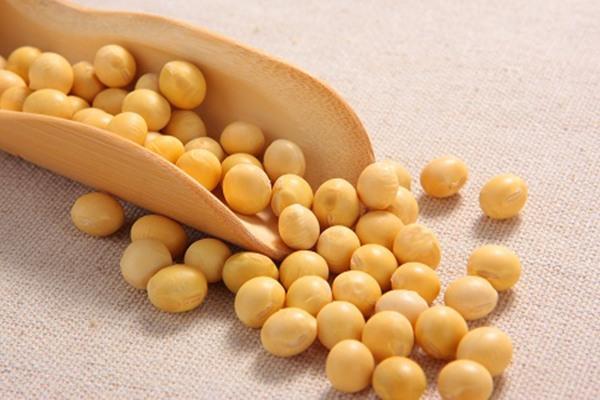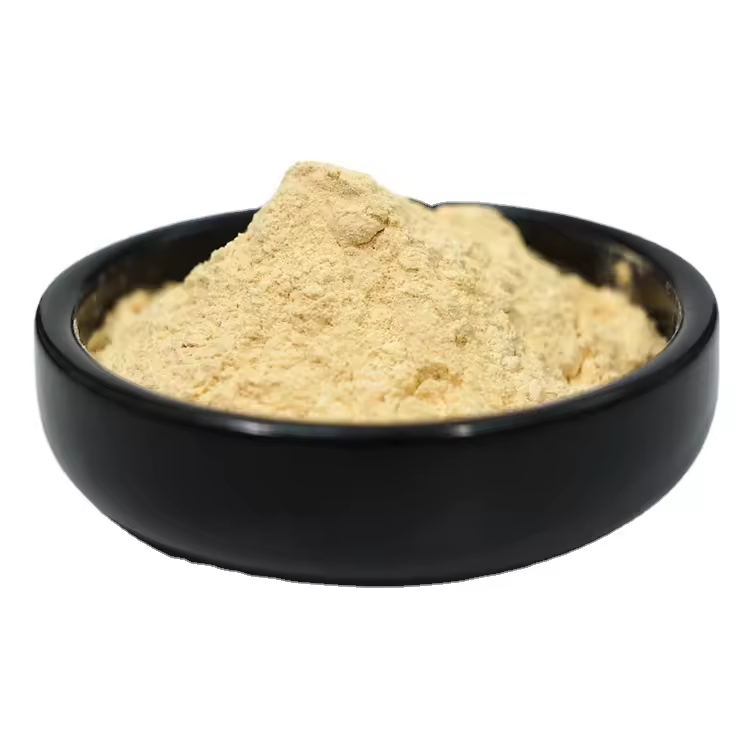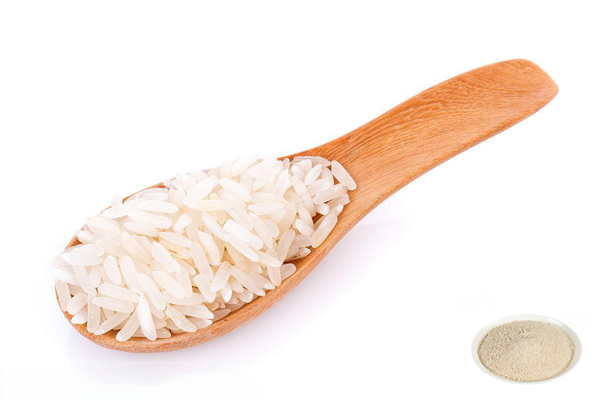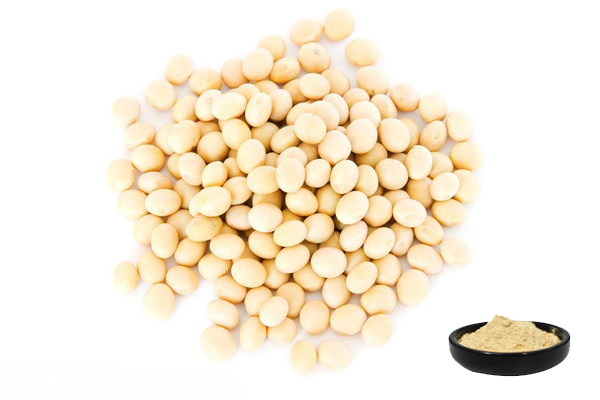60%
Fuente: soja
Ingredientes activos: proteína de soja
Ensayo :60%
Método de ensayo: determinación de Kjeldahl
Aspecto: polvo fino de color amarillo claro
Residuos de plaguicidas: cumplir con la norma (CE) n º 396/2005
- descripción
- Hoja de datos
- Certificado de certificado
-
¿Qué es el polvo de proteína de soja?
Proteína de proteína de soja (proteína de soja) is a kind of plant protein, its amino acid composition is similar to milk protein, except methionine is slightly lower, and the rest of the essential amino acid content is richer, is a plant-based complete protein. The amino acid composition of soy protein is similar to that of essential amino acids, and it is also rich in calcium, phosphorus, iron, oligosaccharides, and various vitamins. It is also rich in branched-chain amino acids (BCAA), which play an important role in muscle synthesis.
verde La tecnología de primavera suministra 60% de polvo de proteína de soja, que está hecho de soja no transgé, libre de colesterol y libre de lactosa, y ha sido ampliamente utilizado en la industria alimentaria, así como otras industrias.
Fundada en 2000, Green Spring Technology se ha comprometido a proporcionar a los clientes extractos de plantas naturales, seguros y orgánicos. Implementamos estrictamente un sistema de gestión de calidad y organizamos la producción de acuerdo con ISO, HACCP, y otras normas de calidad. Nuestros productos se fabrican de acuerdo a los m ã ¡S altos est ã ¡Ndares internacionales, incluyendo EC396, 2023/915, y los m ã ¡S altos est ã ¡Ndares de residuos de disolventes. Primavera verde ha obtenido Halal, Kosher, COSMOS, BRC, IFS, FDA, ISO, y muchas otras certificaciones. Se dispone de informes autorizados de pruebas de terceros.
Especificaciones:
Nombre del producto
Proteína de soja en polvo
Nombre latino
Glycine max (L.) Merr.
fuente
soja
Principios activos
soja Proteínas proteínas
especificación
60%
Método de ensayo
Determinación de Kjeldahl
apariencia
Polvo de color amarillo claro
Residuos de plaguicidas
Cumplir con la norma (CE) n º 396/2005
Reglamento:
Se ajusta a la normativa de la UE.
¿Busca un presupuesto?Benefits:
Gelability
Gelling ability is one of the most important attributes of soy protein, which gives it high viscosity, plasticity, and elasticity, and it can be used as a carrier for water as well as for flavor additives, sugar, and other compounds in product applications, which is extremely beneficial for food processing. There are many ways to form gels, such as heat induction, the addition of salt, the addition of enzymes, etc., all of which can make the protein form gels. Gelation is affected by a variety of factors, such as subunit composition, surface hydrophobicity size, sulfhydryl content, etc. In addition to this, the concentration of protein amount, heating temperature, pH, ionic strength, etc. is also an important element that affects the role of gelation.
Emulsifying Properties
Soya protein molecules have the characteristic structure of emulsifiers, i.e. amphoteric structure, containing both hydrophilic and lipophilic groups in the molecule. In an oil-water mixture, the hydrophilic polypeptide part of the soy protein molecule spreads towards the lipid phase and the polar part towards the water phase. When soy protein is used in food processing, it aggregates at the oil-water interface. It reduces its surface tension and promotes the formation of oil-water emulsions.
Water Absorption and Water Holding
Soy protein molecules contain many polar groups, in contact with water molecules, hydration occurs and shows the ability to absorb and hold water, which can improve the taste of food, but also to maintain the wetness of food, and improve food quality. Soy protein in the product of bread, pastry, and meat products, can improve product quality and taste.
Maintaining Bone Health
Soya protein is rich in calcium and vitamin D and is essential for bone health. Moderate intaking of soya protein can help prevent osteoporosis and fractures and promote bone growth and repair.
Lowering Cholesterol
The plant fiber and isoflavones in soy protein help lower cholesterol levels. Moderate intaking of soy protein reduces the level of low-density lipoprotein cholesterol (LDL-C) while increasing the level of high-density lipoprotein cholesterol (HDL-C), thus reducing the risk of cardiovascular disease.
Improves Blood Sugar Control
The fiber and isoflavones in soya protein enhance insulin sensitivity and help control blood sugar levels.
Provides Antioxidants
The isoflavones in soy protein have strong antioxidant properties that can help scavenge free radicals and reduce the damage caused by oxidative stress. Moderate intake of soy protein can provide antioxidant protection and help prevent the onset of chronic diseases.
Applications:
In the Food Field:
Soya protein powder is widely used in a variety of foods, such as fruit juices, cheese, bread, and food bars. Soya protein is effective in reducing high cholesterol in people with high cholesterol. Soy protein drinks in the arginine content than milk, and their arginine and lysine ratio is also more reasonable; the lipids and linoleic acid are extremely rich and do not contain cholesterol, which can prevent cardiovascular disease in adulthood. Rich lecithin can remove excess sterols in the blood, ‘vascular scavenger’ reputation. Soya protein drinks are easier to digest and absorb than milk. Milk in the stomach is easy to form large and hard lumps, while soy milk in the stomach is formed into small slices, and is fluffy, not hard, which can make it easier to digest and absorb.
-
descargar
Proteína de soja en polvo 60% COA


 inglés
inglés francés
francés español
español ruso
ruso coreano
coreano Japonés japonés
Japonés japonés













